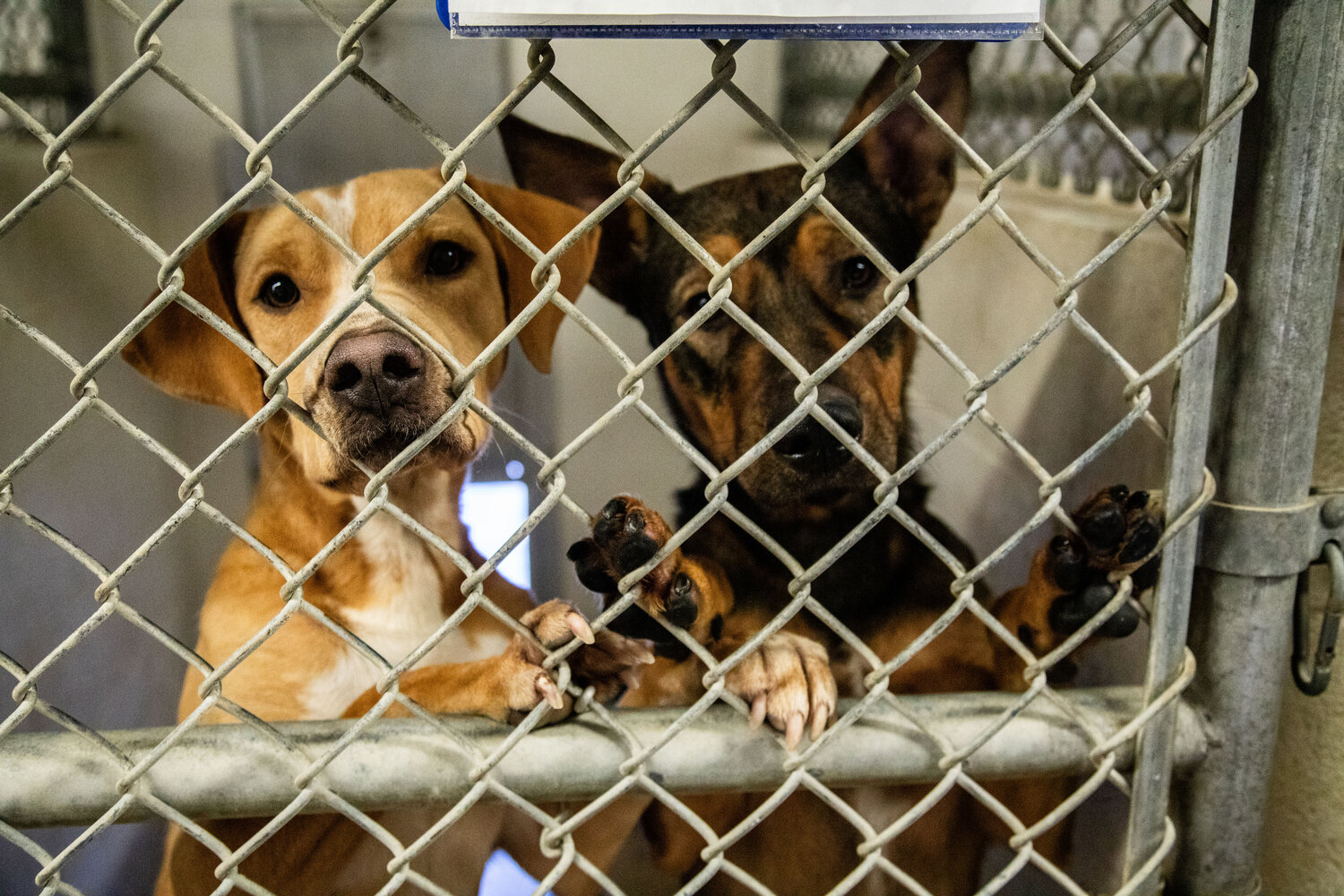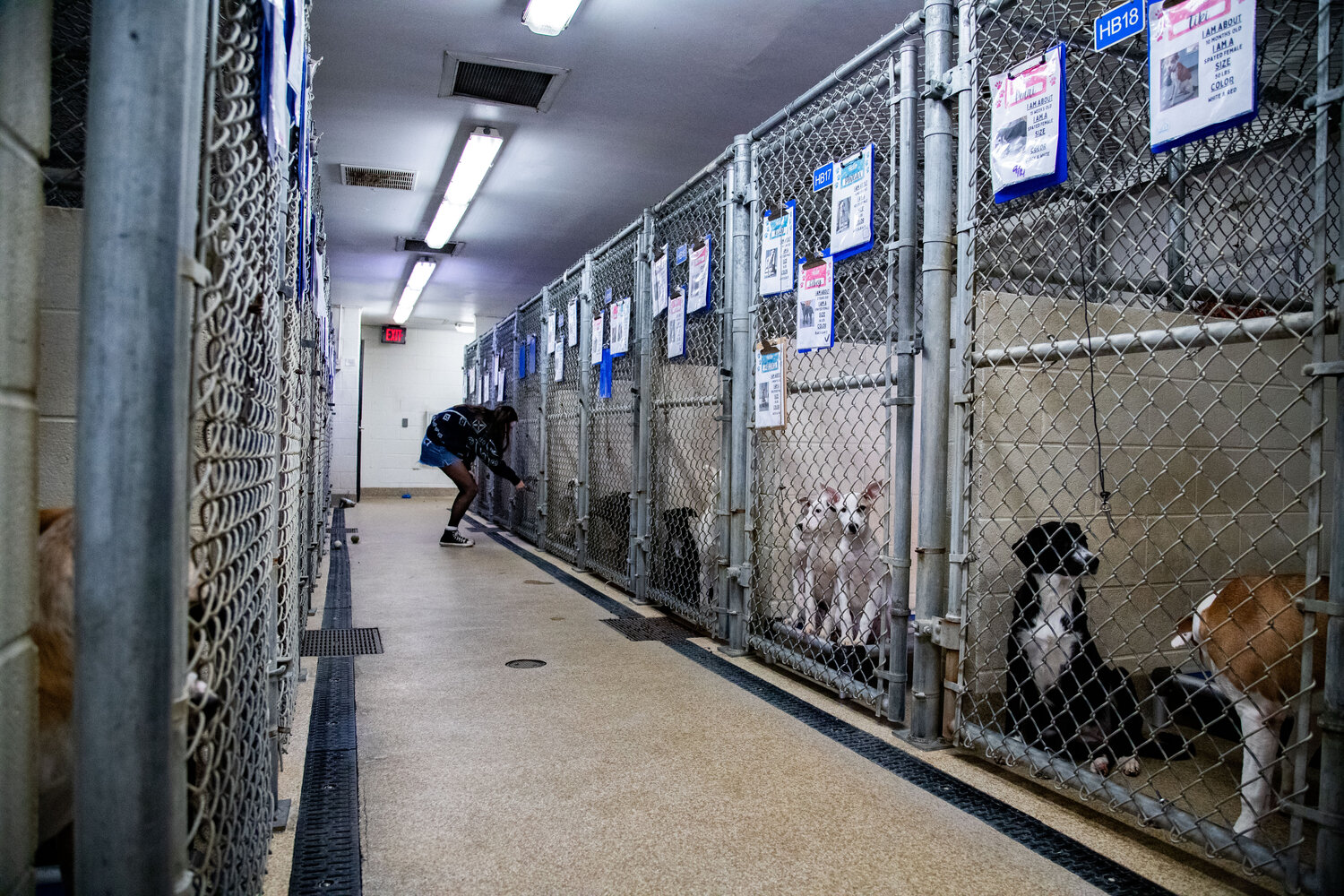Lexington County animal shelter talks overpopulation, dealing with the cold, impacts of new restrictions
With pet overpopulation continuing to be a severe issue, locally and nationally, Lexington County Animal Services is encouraging residents to do their part to keep pets safe during the colder months and curb trends that send unclaimed animals out into the elements.
This item is available in full to subscribers.
Subscribe to continue reading. Already a subscriber? Sign in
Get 50% of all subscriptions for a limited time. Subscribe today.
Please log in to continueNeed an account?
|
Lexington County animal shelter talks overpopulation, dealing with the cold, impacts of new restrictions
With pet overpopulation continuing to be a severe issue, locally and nationally, Lexington County Animal Services is encouraging residents to do their part to keep pets safe during the colder months and curb trends that send unclaimed animals out into the elements.
Like many shelters around the state and country, the county facility faces challenges in keeping up with the amount of stray animals that comes its way, with Brittany Jones, the county’s director of animal services, detailing some of the efforts in an interview with the Chronicle.
The shelter, which has room to reasonably house about 128 pets, was hit with 505 animals in July, and is currently housing 156 dogs. It has 64 indoor-outdoor kennels, which Jones said would ideally hold two dogs each, but as it is now, there are often three to six dogs in each kennel.
The county recently passed an updated animal control ordinance targeting what it sees as one of the biggest contributors to overpopulation, particularly as it applies to dogs: “backyard breeders.” The updated restrictions put new limits on who is allowed to breed and set a limit on the number of kittens and puppies that can be brought into the shelter.
As to how the shelter is already dealing with overpopulation, Jones said one way they are combating it is the way they manage intake, hoping to keep animals from becoming stuck in the shelter.
If someone wishes to surrender an animal they can take them to the shelter, which will take photos, sending the animal back home for two weeks. During the two weeks, the owner and animal services work to see if they can solve the issues forcing them to give up the animal. If no resolution is found, the animal is taken in by animal services.
The benefits here stretch beyond giving the animal a chance to stay where it’s at, Jones explained.
“That animal has two weeks to be found for a rescue or adoption facility rather than if it's just dropped off here, it has five days,” she said.
If an animal is brought in by animal control officers, then they are held for a five-day period. At the end of this period the dog is either put up for adoption, taken to a rescue or euthanized.
The director added that the county recently passed a restriction requiring all dogs to be microchipped and registered with the owner's name and address, which will help them reconnect many dogs with their families and keep them out of the shelter. She additionally noted that a lot of people don’t know to come look at the shelter for their pet, so the new requirement will allow animal service to work past that knowledge gap.
Jones said other ways the shelter is working to combat overpopulation include communicating with other shelters. The director shared that they had received and vetted a huge list of roughly 300 rescues from the Charleston Animal Society, opening up new potential avenues to free up space for the animals it can’t handle.
“We're a lot more honest with the public now,” the director said. “Anyone that drops off an animal here, we let them know that the animal could unfortunately be put to sleep just because of the amount of animals that we have.”
She added that the new restriction on “backyard breeders” is key to relieving stress on the shelter.
“You can't just breed two backyard dogs that have no registration, no health guarantee, nothing like that,” Jones said.
According to Jones, the Lexington County shelter doesn’t currently have a volunteer or foster program, though she has been in touch with the Columbia Animal Shelter to get information about its programs, but she emphasized the county would need more space to implement a foster program.
Holiday surrenders and dealing with cold weather
If patterns hold, the holidays should bring a swell of surrenders, she lamented.
“They usually get returned in January and the beginning of February,” Jones said. “Some will be returned before we close for New Years.”
“Those are usually the ones that are truly gotten as gifts,” she added.
The fact that many inexperienced pet owners get animals during the holidays exacerbates the issue that many people think they know what to do with their animals when it’s cold, but are often misinformed.
Jones said a lot of pet owners think providing dogs or other animals with heat lamps where they sleep is a good way to cope with the winter weather. The director explained these heat lamps can catch on fire and that often these animals are left in a contained space where they are unable to escape.
Jones told the Chronicle that if your pet is residing outside, they need some sort of bedding that is dry along with unfrozen water.
“In a perfect world we'd like to see the animals inside,” she said.
Both winter and summer lead to an uptick in welfare checks, Jones said. When it comes to taking corrective action, she said officers will leave a note if an owner doesn’t respond and will routinely check in on the animal to see if progress in its care is being made.
“As long as changes are happening, we're good,” Jones said. “But if nothing is changing, the weather's getting colder, dog chains getting shorter whatever the case may be, we'll definitely look at doing a warrant to remove the animal off that property.”
Jones said when taking your dog on a walk during cold temperatures. you need to ensure the dog is going to be dry coming back in, putting focus on their feet as they walk through ice, puddles or snow.
Like people, dogs can get sick, and while she emphasized that she is not a vet, Jones said that dogs show signs similar to humans – runny noses, drainage and other signs of respiratory colds.
“Really, it’s just pay attention to your pet,” she said. “If you have an outside pet, whether it be on a chain or on or on a pen, don't assume the water is OK, don't assume the dog;s fine because it is chunky and has fur. Don't assume, just go out there and actually lay eyes on your pet. Ask yourself if you're comfortable with the situation and if you are, that's one thing, but if you're not, work on those changes.”
Other items that may interest you










Comments
No comments on this item Please log in to comment by clicking here